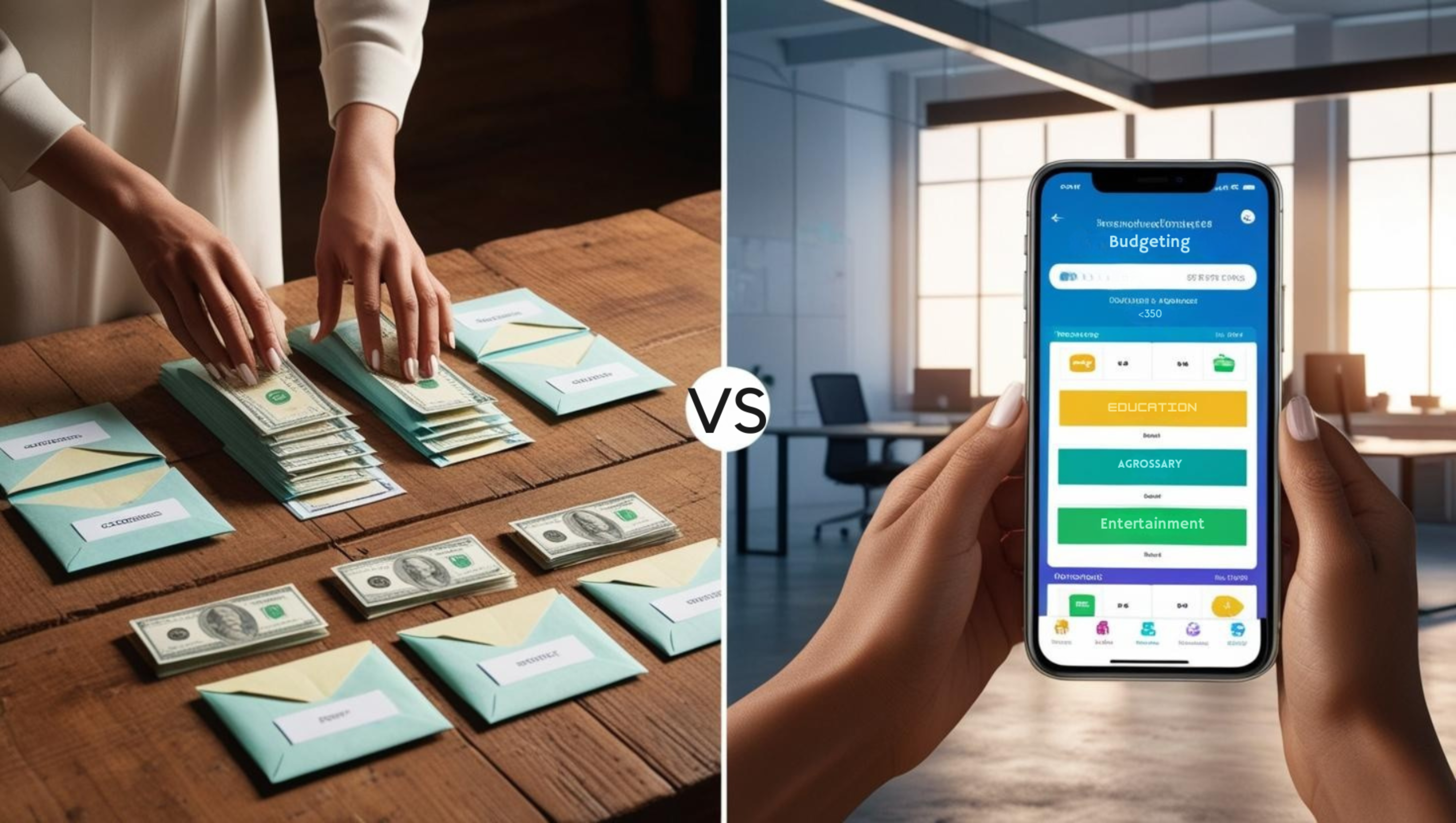NISM Certification Training
(24)+ Courses

Budgeting is the cornerstone of financial success, offering a clear pathway to achieving your financial goals. It helps you control your spending, save for future needs, and avoid debt. Two popular approaches to budgeting are the traditional envelope system and the use of modern budgeting apps. While both methods aim to enhance financial discipline, their execution and appeal differ significantly. This article delves into the pros and cons of each system, helping you determine which one suits your lifestyle and goals.
The envelope system is a cash-based budgeting method that has stood the test of time. It involves allocating physical cash into labeled envelopes for specific categories, such as groceries, transportation, entertainment, and savings. Each time you make a purchase, you draw from the relevant envelope. Once an envelope is empty, you stop spending in that category until the next budgeting cycle.
The beauty of the envelope system lies in its simplicity and effectiveness. It creates a tangible connection between your money and your spending, making you more conscious of your financial habits. For example, if you’ve allocated ₹10,000 for groceries but find the envelope empty mid-month, it serves as a visual reminder to adjust your spending habits or prioritize essentials.
However, the envelope system has its limitations. In a world that increasingly relies on digital payments, carrying cash for every transaction can be inconvenient. Additionally, it lacks the ability to track spending trends over time, which can be crucial for long-term financial planning.
Modern budgeting apps like YNAB (You Need a Budget), Mint, and PocketGuard have revolutionized the way people manage their finances. These apps connect directly to your bank accounts, credit cards, and other financial tools, providing a comprehensive overview of your income, expenses, and savings in real time.
One of the significant advantages of budgeting apps is automation. Unlike the manual cash allocations in the envelope system, apps categorize your transactions automatically, saving you time and effort. They also offer features like goal tracking, spending analytics, and reminders for bill payments, which help you stay on top of your financial commitments.
For instance, apps like Mint allow you to set monthly spending limits for categories such as dining out or shopping. If you exceed your limit, the app sends an alert, enabling you to adjust your spending accordingly. This level of customization and real-time feedback makes budgeting apps ideal for tech-savvy individuals and those with diverse income streams or irregular expenses.
Despite their advantages, budgeting apps are not without drawbacks. They require a certain level of digital literacy and depend heavily on technology. Users must also be comfortable sharing financial data, as privacy concerns can arise with apps linked to bank accounts.
Both the envelope system and budgeting apps offer unique advantages and cater to different types of users. The envelope system is best suited for individuals who prefer a hands-on approach and find it easier to stick to a budget when using physical cash. It’s particularly effective for those who are new to budgeting or struggle with self-control in specific spending categories.
On the other hand, modern apps are ideal for individuals who value convenience, automation, and detailed financial insights. They work well for tech-savvy users who prefer cashless transactions and want to track their financial trends over time. Apps also provide the flexibility to manage multiple accounts and create tailored budgets for various goals.
Consider two individuals: Ramesh and Priya. Ramesh, a retiree, prefers the envelope system because he primarily uses cash and appreciates the simplicity of physically dividing his money. Priya, a marketing executive in her late 20s, opts for a budgeting app like YNAB to manage her digital payments and track her financial progress.
Ramesh finds that the envelope system helps him control spending on non-essentials like dining out, as he limits himself to the cash in the envelope. Priya, on the other hand, enjoys the convenience of setting up monthly savings goals and monitoring her investments through her app.
For those who want the best of both worlds, a hybrid approach might be the answer. You can use the envelope system for discretionary expenses like entertainment and dining while relying on apps to manage fixed costs such as rent, utilities, and loan repayments. This combination allows you to leverage the strengths of both systems, providing discipline and insight into your financial habits.
Choosing between the envelope system and modern budgeting apps depends on your financial habits, lifestyle, and comfort with technology. While the envelope system offers a simple and tangible way to manage your finances, budgeting apps provide automation and detailed analytics for a holistic view of your money. Regardless of the method you choose, the key to successful budgeting lies in consistency and adaptability. Start today by exploring these systems and find the approach that empowers you to take control of your financial future.
